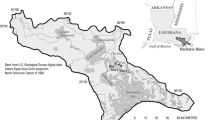Abstract
Four aged Madison County, New York farm ponds were selected to see if various treatments could be used to restore the water quality. One pond was untreated and used as a control; another pond was partially drained and exposed to the drying and oxidizing effects of the air over the fall and winter; the other two ponds were drained and the accumulated sediment removed by bulldozing. In these latter two ponds, Chara vulgaris vegetation was inoculated following the restoration process. C. vulgaris growth rapidly became the dominant producer where this inoculation was accomplished in the fall of 1976, and it is expected that the other pond will also become a C. vulgaris pond in 1978 — after its oogonia have undergone the requisite winter dormancy period.
Early C. vulgaris growth was found to be associated with clear water conditions and lessened phytoplankton growth; short, bushy, light-inhibited growth by the algae stabilized the bottom against wind-caused turbidity because of its rhizoidal growth within the substrate. Pioneer C. vulgaris growth was also found to be highly productive, significantly lowering the pond's CO2 readings.
Investigators of aquatic systems are cautioned to be cognizant of the effect of epiphytic growth on successional events in such environments. Such epiphytes are surely important, if not prime, causes of the demise of various aquatic macrophytes.
The partial draining and exposing of a pond over the fall and winter did not yield significantly improved water conditions.
Similar content being viewed by others
Reference
Ademec, Jan. Sept. 1973. Control of aquatic vegetation in New York State. New York State Coll. of Ag. and Life Sci., Cornell Univ., Ithaca, New York. 59 p.
Archer, B. J. & Bachman, R. 1974. Experimental application of Aliquat-4 and copper for control of pond weeds. Am. Water Works Assoc. J. 66 (4): 250–252.
Boyd, Claude E. 1971. The limnological role of aquatic macrophytes and their relationship to reservoir management. Reservoir Fisheries and Limnol., Spec. Pub. No. 8: 153–166.
Barr, James E. & Huner, Jay V. Summer 1977. Predaceous arthopods: a problem in your pond? Farm Pond Harvest 11 (3): 11–12.
Crawford, Shirley A. 1977. Chemical, physical, and biological changes associated with Chara succession in farm ponds. Hydrobiologia 55 (3): 209–217.
Crocker, William. 1948. Growth of plants. Reinhold Publ. Co., New York. 459 p.
Forsberg, Curt. 1965. Environmental conditions for Swedish charophytes. Symbolae Botanicae Upsalienses 18 (4): 5–62.
Gordon, Myron. Nov. 1943. Charales, plant benefactors of fishes. The Aquarium: 117–120.
Goulder, R. 1969. Interactions between the rates of production of a freshwater macrophyte and phytoplankton in a pond. Oikos 20: 300–309.
Hasler, Arthur D. 1949. Demonstration of the antagonistic action of large aquatic plants on algae and rotifers. Ecology 30: 359–364.
Henricsson, Monica. 1976. Nutritional studies of Chara globularis, Chara zeylanica, and Chara haitensis. Doctoral thesis. Uppsala Univ., Sweden. 51 p.
Kiner, Walter. 1944. Notes on the distribution and bio-ecology of characeae in Nebraska. Butler Univ. Bot. Stud. 6: 143.
Migula, W. 1897. Die Characeen Deutschlands, Österreichs und der Schweiz — In: L. Rabenhorst, Kryptogamen — Flora von Deutschland, Österreich und der Schweiz. 5. 2 Aufl. Leipzig: 50.
Myers, Gary L. May 1973. Prairie pothole ecology and the feasibility of growing rainbow trout in prairie potholes. Master of Sci. Thesis. North Dakota State Univ., Nat'l Tech. Info. Serv., Springfield, Va. 91 p.
Ray, John & Stevens, Verl. 1970. Using Baytex to control crayfish in ponds. The Prog. Fish-Culturist 32 (1): 58–60.
Robinson, Charles. 1906. The characeae of North America. Bull. of the New York Bot. Gardens 4 (13): 243–308.
Smith, Gilbert. 1950. The freshwater algae of the United States, McGraw-Hill Book Co., New York. 695 p.
Twitty, Tom. April 10, 1977. Plan for quicker lake Apopka drawdown to cost $1 million extra. Sentinel Star Newspaper, Orlando, Florida: 11D.
Van Aller, Robert T. & Pessoney, George F. Nov. 1974. Doom to the bloom. Sea Grant. National Oceanic and Atmospheric Adm. 5 (3): 1–2.
Vertucci, F. October 28, 1977. A preliminary investigation of the production and distribution of the aquatic macrophytes of Rat Cove, Otsego Lake. A paper presented at the Region II Biology Convocation. Biology Dept., SUNY, Oneonta, New York.
Zar, Jerrold H. 1974. Biostatistical analysis. Prentice-Hall, Englewood Cliffs, New Jersey. 620 p.
Author information
Authors and Affiliations
Rights and permissions
About this article
Cite this article
Crawford, S.A. Farm pond restoration using Chara vulgaris vegetation. Hydrobiologia 62, 17–31 (1979). https://doi.org/10.1007/BF00012559
Received:
Published:
Issue Date:
DOI: https://doi.org/10.1007/BF00012559




